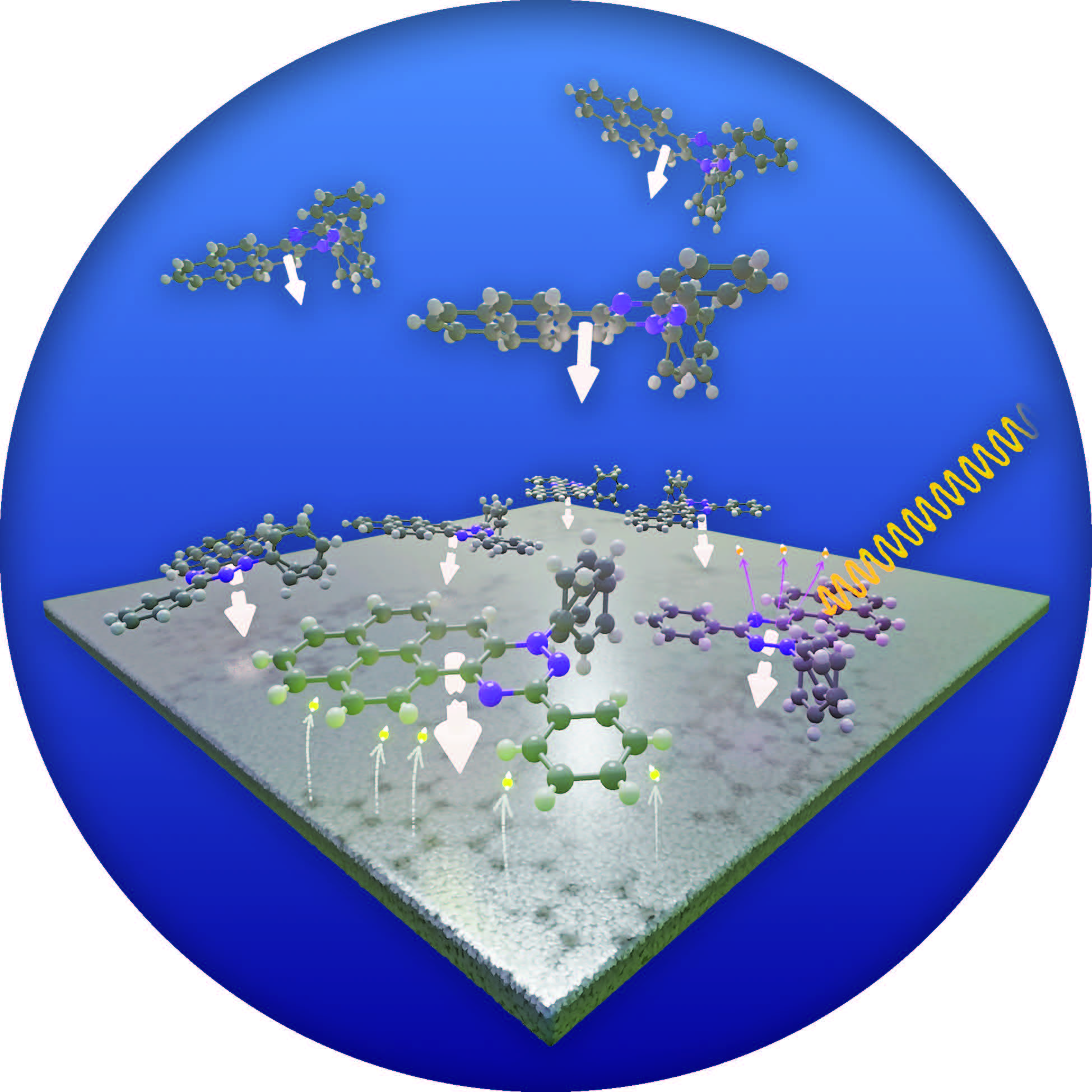News
07.08.2024
First step in radical spintronics
New study by Prof. Benedetta Casu and her research team
Electronic devices strongly impact our everyday lives, changing our habits and perceptions of the world. Science and technology continuously search for opportunities to exploit matter properties fully.
In their last article just published in Angewandte Chemie International Edition, Tübingen scientists have focused their efforts on using a very thin layer of radicals, 10000 times thinner than a human hair, to coat a ferromagnetic material, polycrystalline cobalt, to change the cobalt magnetic properties at the junction with the radicals.
Purely organic radicals are a family of molecules composed only of light elements, such as carbon, nitrogen, and oxygen. They are transparent, light, and flexible materials. They promise lower costs of production and sustainable, and recyclable chemistry. These radicals are organic molecules that carry an unpaired electron, i.e., they are materials with permanent magnetic properties.
They must be used as a film in a device, i.e., the radical molecules cover a substrate such as a metal surface, forming a coating. The Tübingen scientists had started to approach this aspect thirteen years ago when the German Research Foundation granted the Casu Lab the first project to prepare radical films in a controlled way using evaporation, pioneering the field of radical thin film processes. The research group has been successfully working on these materials since then.
In the present work, Prof Casu and her collaborators investigated the thin radical layer and the cobalt using X-ray photoelectron and X-ray absorption spectroscopy, techniques based on the interaction of electromagnetic radiation with matter in the X-ray range. The measurements were performed in the home lab in Tübingen, and at the BESSY synchrotron in Berlin.
The Casu Lab team found that a Blatter radical derivative thin layer can decrease the magnetic moment of the cobalt atoms because of the chemical bond that forms between the inorganic ferromagnetic and the organic magnet.
The novelty of the work is not only in the results but also in the methods that analyse in detail the electronic structure of the interface. This approach helps to screen organic/ferromagnetic interfaces for applications in spintronics in a simple way. Electronics is based on devices that use charge transport, however, electrons also possess a spin that, as mentioned, gives rise to the magnetic properties of the materials. Spintronics takes advantage of the spin-charge coupling to develop new devices, such as memories and sensors.
The article has been selected as Hot Topic: Surfaces and Interfaces and is also featured on the issue's inside back cover. The cover production was done in collaboration with Michael Pelzer of the Forschungszentrum für Wissenschaftskommunikation, Knowledge Design Area, at the University of Tübingen.
The molecules were synthesized by the Rajca lab, at the Department of Chemistry of the University of Nebraska. To get a deeper insight into the phenomena, Andrea Droghetti, Trinity College, Dublin, performed the theoretical calculations.
The Casu team was supported by Helmholtz-Zentrum Berlin, the German Research Foundation (DFG, contract CA852/11-3, project number: 394233453), the Federal Ministry of Education and Research (BMBF) in the framework of the program “Erforschung von Universum und Materie—ErUM-Pro” (RadicalQuantum, Grant number 05K22VT1), and by the European Union's Horizon 2020 Research and Innovation program under grant agreement no. 965046, FET-Open project Interfast (Gated INTERfaces for FAST information processes). Open Access funding was enabled and organised by Projekt DEAL with the help of the University of Tübingen.
Original publication:
Radical-Induced Changes in Transition Metal Interfacial Magnetic Properties: A Blatter Derivative on Polycrystalline Cobalt
Ewa Malgorzata Nowik-Boltyk,Tobias Junghoefer, Erika Giangrisostomi, Ruslan Ovsyannikov, Chan Shu, Andrzej Rajca, Andrea Droghetti, M. Benedetta Casu
Angewandte Chemie, Int. Ed. (2024), https://doi.org/10.1002/anie.202403495
Inside Back Cover: https://doi.org/10.1002/anie.202413970
Contact
apl Prof. Dr. Benedetta Casu
Institute of Physical and Theoretical Chemistry
University of Tübingen
Auf der Morgenstelle 18
D-72076 Tuebingen
Tel. +49 7071 29-76252
Fax: +49 7071 29 5490
http://www.uni-tuebingen.de/de/42240
https://twitter.com/plastic_spin
Back
